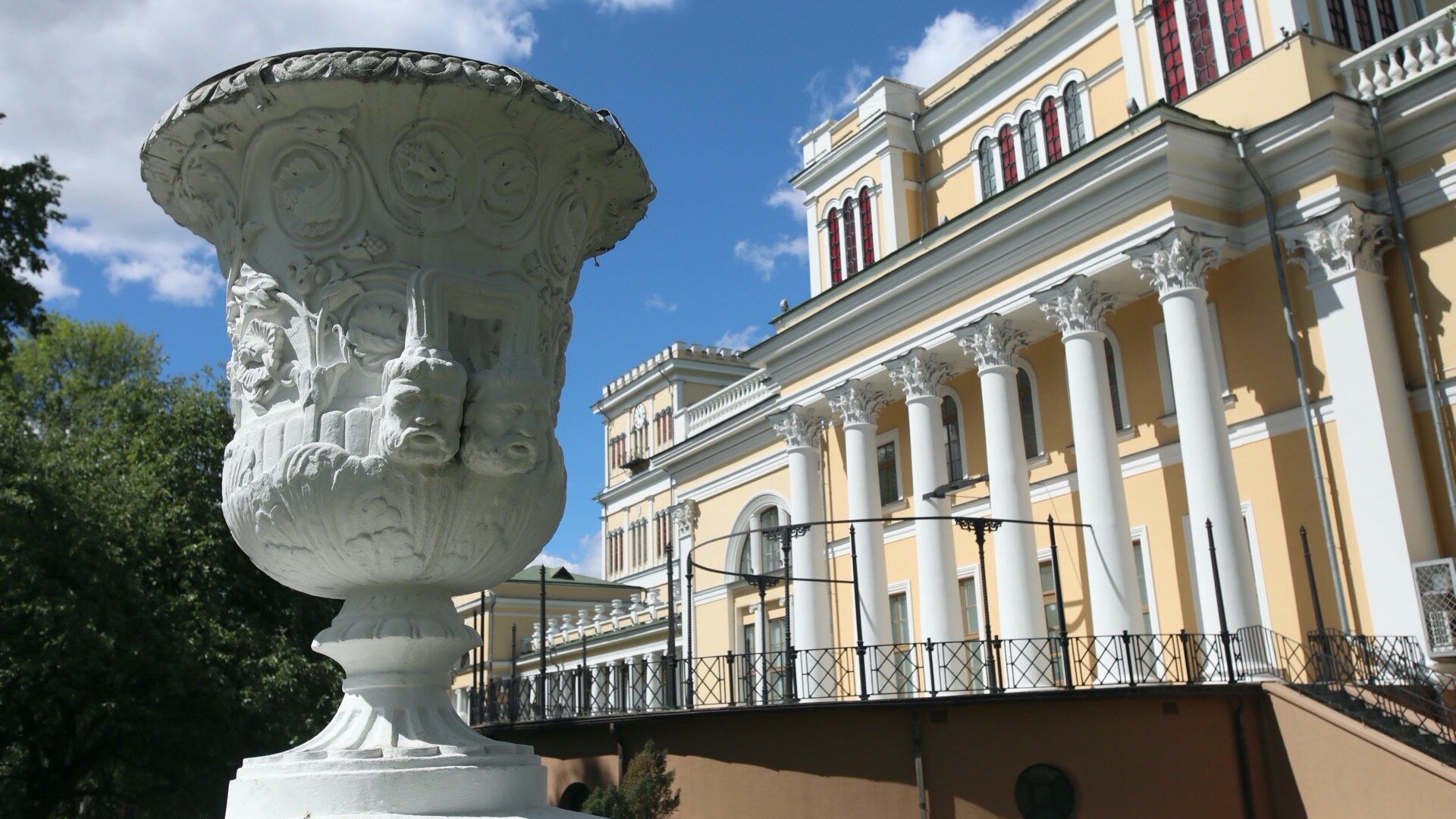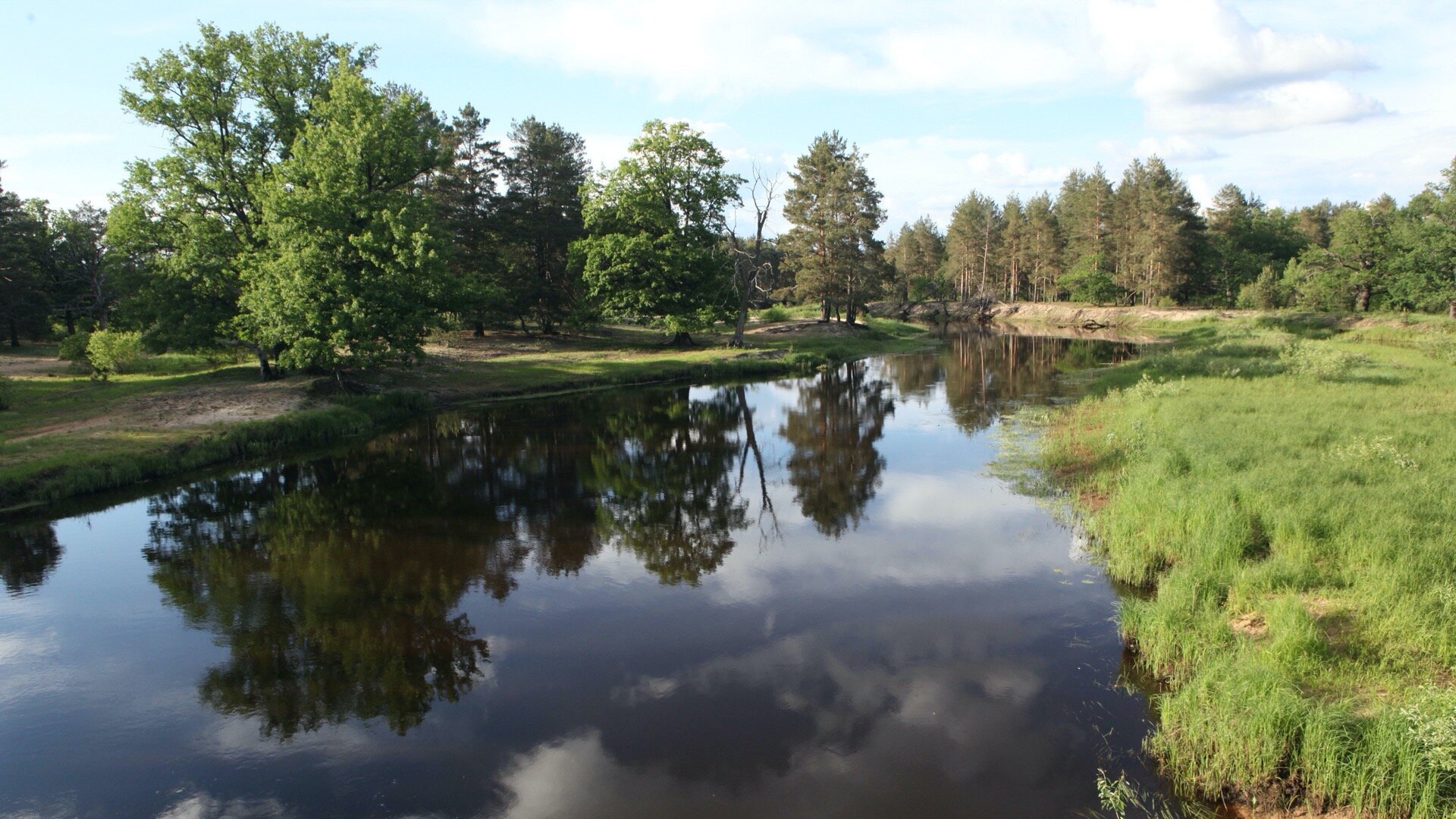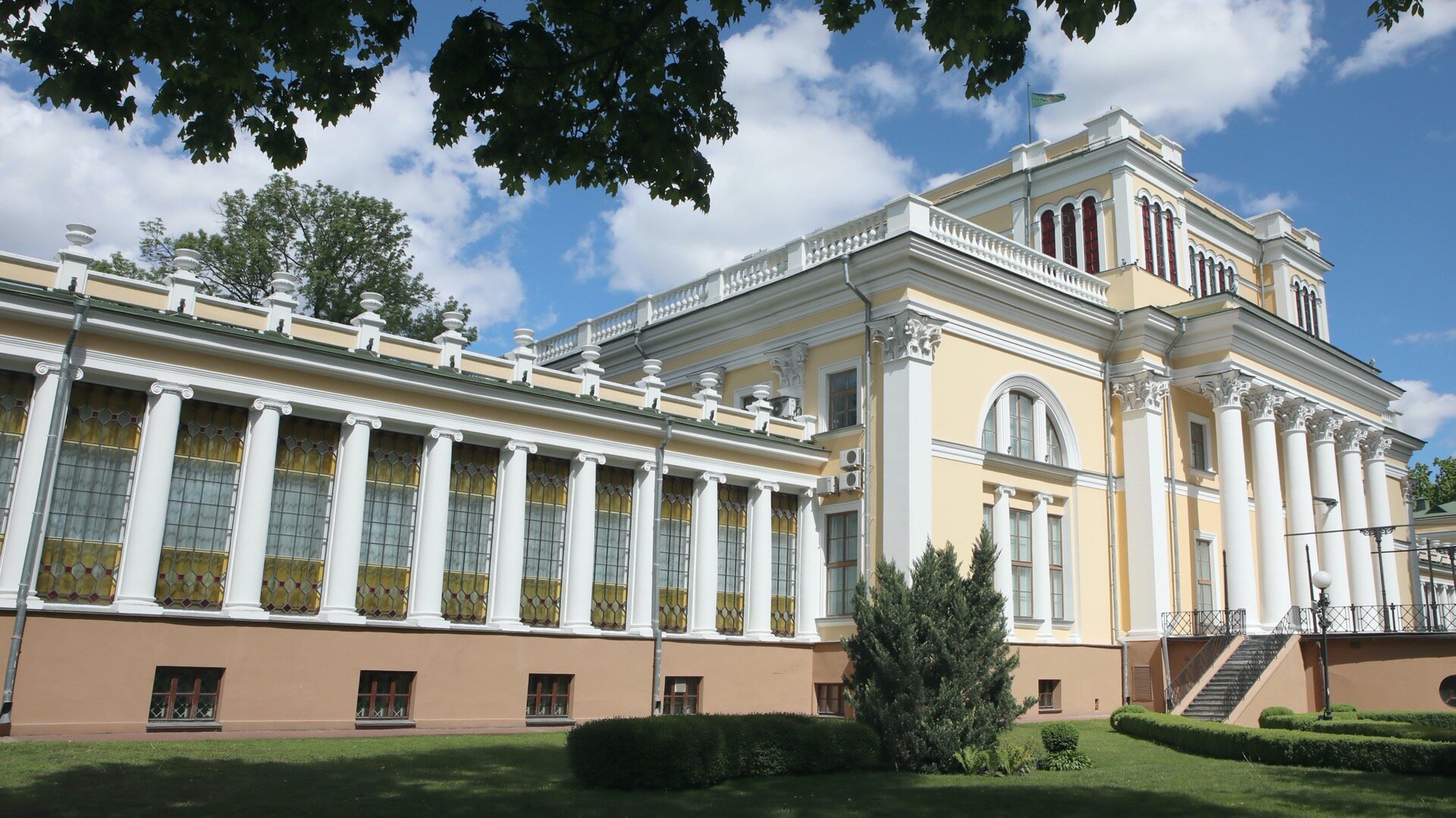Gomel Oblast
History, interesting facts

Gomel Oblast, the largest south-eastern region of Belarus, boasts unique natural, economic, and intellectual resources and represents a significant tourist attraction.
People began to inhabit the territory of Gomel Oblast in the Middle Paleolithic (100,000-40,000 years ago). Valid evidence on the presence of representatives of the species Homo neanderthalensis (Neanderthals) in the region was found near the villages of Podluzye, Chechersk District, Svetilovichi, Vetka District, and in the city of Gomel.
In the Upper Paleolithic (40,000-14,000 years ago), human activity expanded, as evidenced by the archaeological sites of Homo sapiens (Cro-Magnon man) near the villages of Novoselki in Vetka District (about 40,000 years ago), Yurovichi in Kalinkovichi District (about 27,000 years ago), Berdyzh in Chechersk District (about 24,000 years ago).
In the 9th-12th centuries, according to ancient sources, there were two East Slavic tribes – the Dregovichi and the Radimichi – in that is now Gomel Oblast. The Dregovichi lived between the Dnieper, the Berezina, and the Pripyat. At the end of the first millennium, they formed a tribal principality with the center in Turov.
Turov is the oldest city in Gomel Oblast, first mentioned in the Tale of Bygone Years in 980.
The fact that Turov is one of the oldest centers of writing and chronicling is evidenced by a fragment of the Gospel of the 11th century, the oldest book in the territory of Belarus, found here in 1866.
Gomel is also one of the oldest cities in Belarus. For the first time Gomiy – this is the ancient name of Gomel – was mentioned in the Hypatian Chronicle in the year 1142. Around 1335 Gomel became part of the Grand Duchy of Lithuania.
Thirteen districts of Gomel Oblast were seriously affected by the accident at the Chernobyl Nuclear Power Plant. Their revival and sustainable development are under the constant control of the Head of State. The President visits Chernobyl-hit areas every year. Thanks to a balanced and targeted rehabilitation strategy, these areas are getting a new lease of life and, what is more important, becoming attractive for investments.
Geography
Gomel Oblast is located in the south-eastern part of Belarus. There is the extreme southern point of the country in its territory, located on the Dnieper river, south of the town of Komarin, Bragin District. Its coordinates are 51°16'N and 30°35'E.
The area is 40,000 km2. The region occupies a fifth part of the country's territory and borders on four regions of Ukraine (Kiev, Chernigov, Zhitomir and Rovno) and one oblast of Russia (Bryansk region).
Gomel Oblast is located on the Eastern European plain that features eroded hills and uplands. The highest of them is the Mozyr ridge with the height of 206m.
Administrative and territorial division
- 21 districts (Bragin, Buda-Koshelevo, Vetka, Gomel, Dobrush, Yelsk, Zhitkovichi, Zhlobin, Kalinkovichi, Korma, Lelchitsy, Loyev, Mozyr, Narovlya, Oktyabrsky, Petrikov, Rechitsa, Rogachev, Svetlogorsk, Khoiniki and Chechersk) and 4 districts in the city of Gomel;
- 1 city of oblast subordination (Gomel) which is divided into 4 districts;
- 17 towns of district subordination;
- 15 urban-type settlements;
- 2,249 rural settlements, including 230 agrotowns.
There are 235 primary-level councils in Gomel Oblast, including 232 rural councils, two city primary-level councils of deputies (district subordination), and one village council.
Gomel, the administrative center, is the second largest city in the country after Minsk in terms of population (501,193).
Population
As of 1 January 2025, the population of Gomel Oblast was 1,327,973, including 1,040,624 urban residents and 287,349 rural dwellers.
The largest towns and cities in Gomel Oblast are Gomel (501,193), Mozyr (104,517), Zhlobin (76,304), Rechitsa (64,733), Svetlogorsk (61,812).
The biggest agrotowns are Yeremino (5,479), Uritskoye (4,099), Krasnoye (3,529), Kozenki (3,484), Pokolyubichi (3,032).
Economy

Gomel Oblast is the country’s largest industrial region, accounting for nearly 19% of the country's industrial production (2024).
There are over 1,600 companies, including a number of international brands. They include Mozyr Oil Refinery, Mozyrsalt, Belarusian Steel Mill BMZ, Spartak confectionery factory, Rogachev Milk Canning Plant, Belorusneft, Gomselmash, Svetlogorsk Khimvolokno, GomelSteklo, Svetlogorsk Pulp and Board Mill, Gomeldrev, Rechitsa Metalware Plant.
One of the most important sectors of economy in Gomel Oblast is agriculture: meat and dairy farming, vegetable and potato growing, and flax growing in the eastern part of the oblast.
There are 195 agricultural companies in Gomel Oblast. The leading ones include Brilevo agricultural company, Zarya agricultural company, Krinichnaya experimental facility, Zvezda agricultural company, Tikhinichi agricultural company, and Kozenki-Agro.
Gomel Oblast farmers do not only meet the domestic demand for staple foodstuffs, provide raw materials for the processing industry (production of meat and meat products, dairy products and animal feed), but also constantly increase export supplies.
The geography of export includes 112 countries, including Russia, China, Kazakhstan, the United Arab Emirates, Turkiye, Poland, Egypt, Germany, Baltic countries, Israel.
The free economic zone Gomel-Raton was set up in 1998 to cover the areas in Gomel and 12 towns and cities of Gomel Oblast.
Gomel Oblast boasts a well-developed scientific and technology sector, which is represented by three institutes of the National Academy of Sciences of Belarus, six higher educational institutions, more than 20 R&D institutes, special design bureaus that employ about 3,000 specialists.
Gomel Oblast has an excellent road infrastructure. Major international highways connect the countries of Europe with the Russian Federation and Ukraine. Gomel Oblast accounts for 90% of the country's rail cargo transportation and about half of passenger rail traffic.
Natural and mineral resources

There are 414 rivers in Gomel Oblast. The largest of them are the Dnieper, the Pripyat, the Sozh, the Berezina, and the Iput.
The region has 429 lakes. The most widely known lakes are Chervonoye, Beloye, Krushinovskoye, Revucheye, and Staroye.
One-third of the area is covered with forests. Gomel Oblast goes first in the country in terms of forest reserves.
Gomel Oblast is home to the Polesye State Radioecological Reserve, the only one of its type in the world. It studies the areas exposed to radiation after the Chernobyl accident.
Gomel Oblast’s Pripyatsky National Park has preserved the unique landscapes of the Belarusian Polesye in almost pristine condition. This is the only place on the planet with primeval floodplain oak forests.
A number of mineral resources are found in Gomel Oblast. There are rich deposits of potash and rock salt, brown coal, oil shale, glass sands, and chalk. There are also building stones, granite, clay, and others. About 1,500 peat deposits have been explored.
In 1964, the first commercial oil was extracted near Rechitsa. Today the amount of oil produced there is more than 100 million tonnes. A total of 1.8 million tonnes are produced annually.
Sport and tourism
Fifty sports are practiced in Gomel Oblast.
Many natives of Gomel Oblast have won the Olympic champion title. Among them are Leonid Geishtor (canoe sprint, 1960), Nikolai Gorbachev (canoe sprint, 1972), Elena Rudkovskaya (swimming, 1992), Ihar Makarau (judo, 2004), Raman Piatrushenka (canoe sprint, 2008), Artur Litvinchuk (canoe sprint, 2008), Alla Tsuper (aerials, 2014).
Gomel Oblast has international-level sport facilities, including an ice palace, athletics center, team and water sports centers, a stadium and an equestrian arena in Gomel, and a sport and recreation complex in Zhlobin.
A modern ski complex built in the picturesque hilly area of Mozyr has become the hallmark of Gomel Oblast. There you can find everything you need for active recreation: a track for professional skiers and a training slope for beginners, and a well-developed infrastructure.
Gomel Oblast develops various types of tourism. Among them are cultural and educational, sport, gastronomic, religious, hunting, industrial, recreational, and agro-ecotourism.
The local brand is the Golden Ring of Gomel Oblast is the main tourist route of Gomel Oblast that runs through nine settlements and includes 17 tourist facilities.
Gomel Oblast has been actively developing the tourist infrastructure. There are 76 hotels and similar accommodation facilities, 122 farm stays, 22 hunting and fishing lodges.
There are 9 health resorts in Gomel Oblast, including Pridneprovsky, Solnechny Bereg, Serebryanye Kluchi, Chenki, Mashinostroitel, Zolotye Peski, the health center of the Gomel Branch of the Belarusian Railways, Sosny, Vasilek.
Culture and major sights

There are many monuments of archeology, history, culture, and architecture in Gomel Oblast. The oblast boasts 26 museums (including two art galleries), 4theaters, a philharmonic hall, and a circus.
The Palace of the Rumyantsevs and Paskeviches is one of the five most popular attractions in Belarus. The central part of the palace is an example of the late 18th century (1777-1796). Today the palace is not just a museum. It is also the venue of most important negotiations, signing ceremonies and other events, as Gomel is the cultural and scientific heart of the region, the center of international Slavic meetings.
Among other significant architectural monuments that are popular with residents and visitors of Gomel Oblast are the Cathedral of Saints Peter and Paul in Gomel, the Church of St. Archangel Michael of the 18th century in Mozyr, the Holy Assumption Cathedral of the 19th century and the Holy Trinity Church of the early 20th century in Rechitsa, and the Castle Hill in Turov.
Stone crosses are one of the sights of Polesye region. A legend has it that after the Christianization of Rus in the 10th century, these crosses were sent to Turov along the rivers Dnieper and Pripyat from Kiev. People saw the floating crosses and pulled them to the river bank. A total of 12 crosses were found, which corresponds to the number of the apostles. Four crosses have survived in Turov and its surroundings. Two are kept in the city, one in the Church of All Saints and the other in the courtyard of the Cathedral of Saints Cyril and Lavrenty of Turov. The third one is kept in the Church of the Exaltation of the Cross in the village of Pogost, Zhitkovichi District. The most revered cross, known as the growing one, is kept near Turov, in the Borisoglebsky Cemetery.
The cemetery’s chapel houses the Icon of the Mother of God of Kazan, which sometimes streams myrrh (the last evidence dates to 4 August 2017).
Vetka, the town founded by old believers in 1685, attracts tourists as well. Vetka is home to one of the most interesting museums in Belarus – the Museum of Folk Arts (since 2012, the Vetka Museum of Old Believers and Belarusian Traditions named after Fyodor Shklyarov). It has a unique exhibition varying from ancient icons and books to original patterned towels. The museum offers the most complete view over the Neglubka weaving: towels with Indo-European and ancient Slavic characters.
The national festivals of folk humor Avtyuki and folk art Beraginya are widely known not only in Gomel Oblast, but also abroad.
Religion

The Republic of Belarus respects the freedom of faith and religion as an inalienable right of its citizens, which translates into the country's great variety of religious denominations. Christianity is the most widely-spread religion in the country. The largest Christian communities in Gomel Oblast are Orthodoxy, Catholicism and Evangelism. Adventism and Lutheranism prevail among other religious denominations. All in all, there are 17 religious denominations in Gomel Oblast including 419 religious communities.